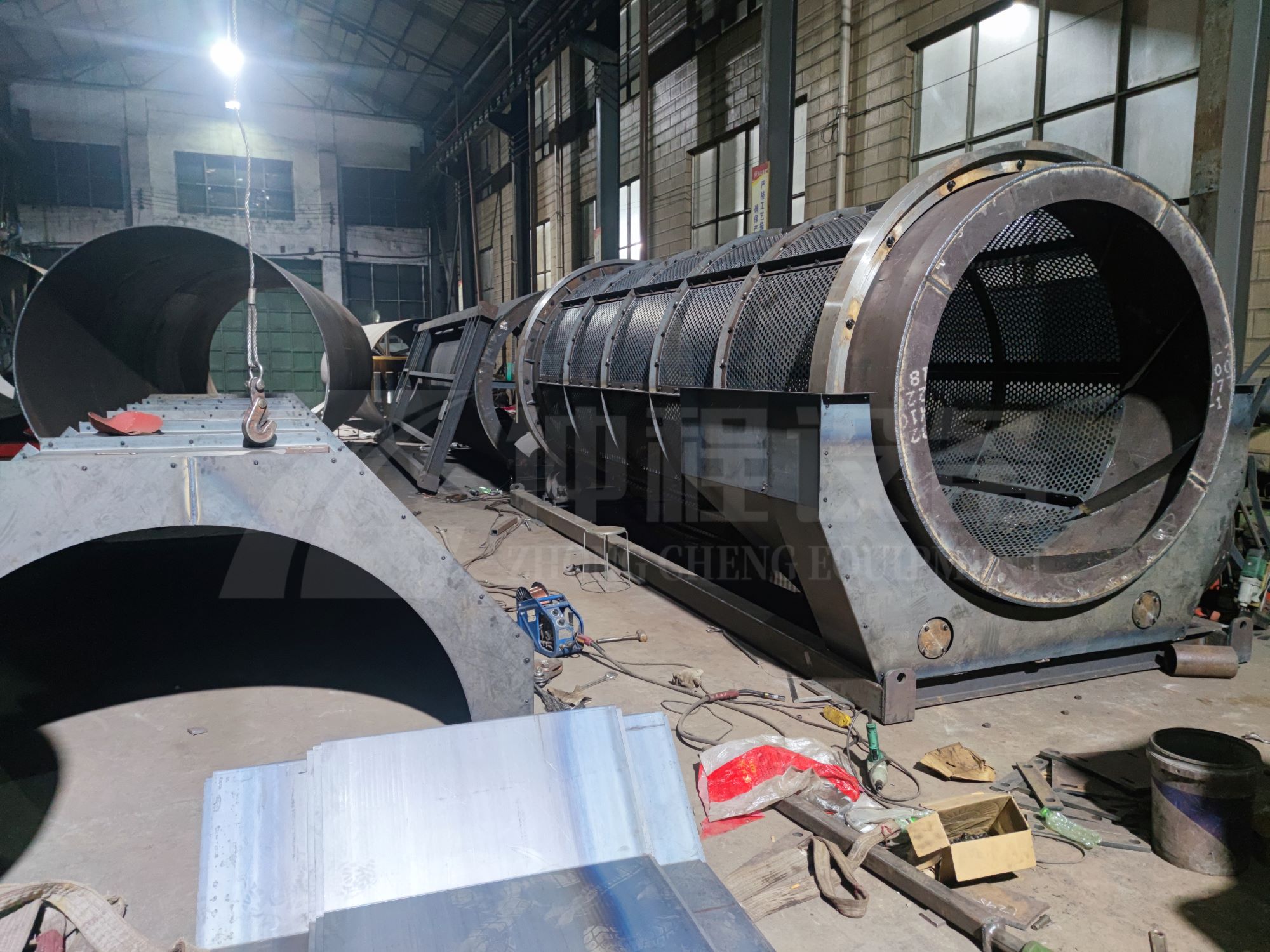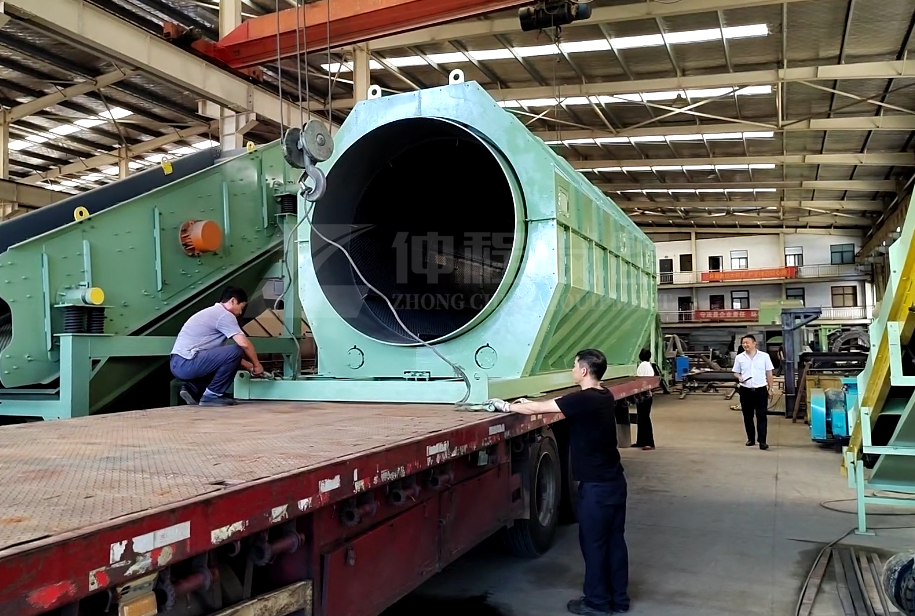Optimizing Trommel Screening Efficiency: Key Factors to Consider
In industrial screening processes, trommels play a crucial role in separating materials based on size. However, achieving optimal efficiency in trommel screening requires an understanding of various factors that influence the process. This article explores the key elements impacting trommel screening, offering insights into how industries can enhance their operations and achieve superior results.
1. Drum Inclination and Rotation Speed
Balancing Drum Angle and Speed
The angle of the drum's inclination and its rotation speed are fundamental parameters in the trommel screening process. A steeper drum angle allows gravity to assist in moving particles along the drum, enhancing throughput. On the other hand, a higher rotation speed can increase the screening capacity but may lead to potential clogging issues. Finding the right balance is crucial.
For instance, a steep angle can accelerate particle movement, allowing materials to pass through the screen holes more effectively. However, if the angle is too steep or the rotation speed too high, it may result in material buildup or inefficient separation. Industries must calibrate these settings to suit the specific materials they process, ensuring a smooth flow and optimal separation.
Impact on Throughput
Achieving the right balance between drum inclination and rotation speed is essential for maximizing throughput. An increase in rotation speed generally results in a higher material processing rate. However, this must be done with caution. An overly fast rotation can lead to incomplete screening, where finer particles are lost with larger ones. Conversely, a slower rotation may enhance separation but reduce the overall throughput. Careful adjustment is key to optimizing performance.
2. Screen Hole Size
Importance of Customization
The screen hole size is another critical factor that determines which particles pass through and which are retained. Customizing the hole size based on specific applications allows industries to achieve precise particle separation. Smaller holes are ideal for fine materials, ensuring that only the desired particles pass through. Meanwhile, larger holes are better suited for coarse particles, allowing for efficient separation.
Tailoring to Material Characteristics
Selecting the appropriate screen hole size requires an understanding of the material characteristics. For materials with varying particle sizes, a combination of different screen hole sizes might be necessary. This approach ensures that finer particles are efficiently separated from coarser ones, enhancing the overall effectiveness of the screening process. Industries can benefit from experimenting with different configurations to find the optimal setup for their specific needs.

3. Material Properties
Influence of Material Density and Shape
The physical properties of the material being processed significantly impact the trommel screening process. Factors such as density, shape, and moisture content can affect how materials interact with the drum and screen. Materials with irregular shapes or varying densities may require adjustments to the screening process to achieve optimal results.
For instance, materials with high moisture content may clump together, reducing separation efficiency. In such cases, adjusting the drum speed and inclination can help mitigate these challenges. Understanding the material properties allows industries to tailor their screening approach, ensuring efficient separation and minimal waste.
Handling Moisture Content
Moisture content is a critical factor that can affect the screening process. High moisture levels can cause particles to stick together, leading to clogging and reduced efficiency. To combat this issue, industries can implement measures such as pre-drying materials or adjusting the drum's inclination to facilitate smoother movement.
Additionally, incorporating air or mechanical drying methods can help reduce moisture content, improving the overall effectiveness of the screening process. By addressing moisture-related challenges, industries can enhance throughput and achieve more accurate separation.
4. Drum Design and Construction
Choosing the Right Drum Design
The design and construction of the drum itself play a significant role in the trommel screening process. Drums are available in various designs, each suited to different applications. Factors such as drum diameter, length, and shape impact the efficiency of material separation.
For example, a longer drum may provide extended screening time, allowing for more thorough separation. Meanwhile, a wider diameter can accommodate larger volumes of material, increasing overall capacity. Industries should consider their specific requirements when selecting drum designs to ensure optimal performance.
Material of Construction
The material used in constructing the drum can also affect the screening process. Drums made from durable materials, such as stainless steel or high-strength alloys, offer increased longevity and resistance to wear and tear. This durability is especially important when processing abrasive or heavy materials, ensuring that the drum can withstand the demands of continuous operation.
By choosing the appropriate drum design and construction materials, industries can enhance the reliability and efficiency of their trommel screening processes, leading to improved productivity and reduced maintenance costs.

5. Maintenance and Operational Practices
Regular Maintenance for Consistent Performance
Regular maintenance is essential to ensuring the long-term efficiency of trommel screening systems. Components such as screen panels, bearings, and drive mechanisms require routine inspection and servicing to prevent breakdowns and maintain consistent performance.
Implementing a proactive maintenance schedule can help identify potential issues before they escalate, reducing downtime and minimizing disruptions to operations. By investing in regular upkeep, industries can extend the lifespan of their equipment and maintain optimal screening efficiency.
Operational Best Practices
In addition to maintenance, adopting best practices in operation can further enhance trommel screening efficiency. Proper training for operators ensures that the equipment is used correctly and safely, minimizing the risk of accidents or damage.
Furthermore, monitoring key performance indicators such as throughput, particle size distribution, and separation accuracy can provide valuable insights into the effectiveness of the screening process. By analyzing these metrics, industries can make data-driven adjustments to optimize their operations and achieve superior results.

Conclusion: Optimizing Trommel Screening for Success
Understanding the various factors influencing trommel screening efficiency is essential for industries aiming to enhance their operations. By carefully balancing drum inclination and rotation speed, customizing screen hole sizes, considering material properties, and selecting the right drum design, industries can achieve optimal separation and throughput.
Additionally, implementing regular maintenance and operational best practices ensures consistent performance and longevity of the equipment. By taking a comprehensive approach to optimizing trommel screening processes, industries can achieve superior results, reduce waste, and increase overall productivity.
-
 Trommel screenTrommel screen, also known as drum screens, are widely used in various industries for sorting and separating materials.Get Quote
Trommel screenTrommel screen, also known as drum screens, are widely used in various industries for sorting and separating materials.Get Quote -
 Crop straw double shaft shreddApplications:Biomass Energy Production: Shredded straw can be used as a feedstock for bioenergy plants to produce electricity or heat.Livestock Feed: Reduced-si...Get Quote
Crop straw double shaft shreddApplications:Biomass Energy Production: Shredded straw can be used as a feedstock for bioenergy plants to produce electricity or heat.Livestock Feed: Reduced-si...Get Quote -
 Zhongcheng Air Drum SeparatorAir drum separators effectively separate lightweight materials (e.g., plastics, paper) from heavier materials (e.g., metals, glass). This high efficiency is cru...Get Quote
Zhongcheng Air Drum SeparatorAir drum separators effectively separate lightweight materials (e.g., plastics, paper) from heavier materials (e.g., metals, glass). This high efficiency is cru...Get Quote
-
2024-08-07Efficient Material Separation with Bounce ScreensThe ballistic separator is an important equipment with separation function designed for the sorting of inorganic particles in the coarsely crushed waste.
-
2023-01-12Waste FeederWaste feeder was specially designed to optimize municipal solid waste sorting systems. The Drum Feeder ensures that your sorting system, baler or shredder has a...
-
2024-06-08Five factors influencing the output of a drum screen.The input efficiency and separation efficiency of the drum screen are controlled by the screen hole size, drum screen diameter, rotation speed, baffle type and ...
-
2023-01-12WindshifterWindshifter (Air Drum Separator ) is the ideal solution for separating all kind of waste types into two fractions, heavy and light. The robust construction and ...
-
2024-06-08Solutions for Jaw Crusher ProblemsJaw crusher is widely used in mining, smelting, building materials, highways, railways, water conservancy and chemical industries. The maximum compressive stren...



